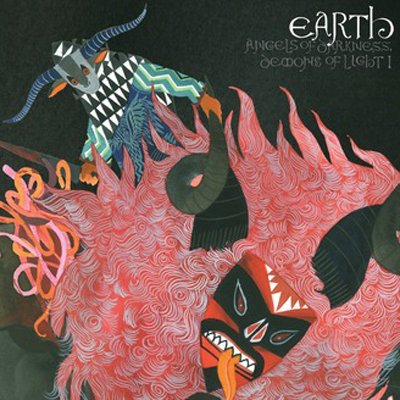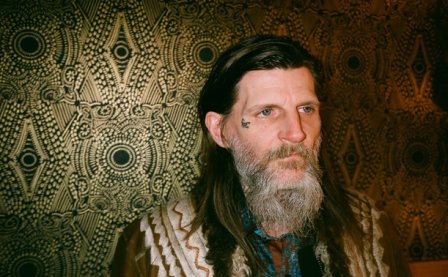Apropos of their name, Dylan Carlson’s Earth have always made elemental music. On their full-length debut, Earth 2: Special Low Frequency Version, the Seattle metal band set the template for the drone-doom sub-genre they would inspire by playing Black Sabbath riffs as if they were emanating from the planet’s very core. After their reemergence in 2005, the band established a new sound that explored space, riffing on the open skies of the American West. Carlson had bought a Fender Telecaster, and the wood-and-metal purity of its tone informed his expansive vision of Americana on Earth’s full-length return, Hex, Or Printing In The Infernal Method. As Carlson put it, “[w]hen people speak of ‘Tele-players’ it’s almost the same as saying someone is a Buddhist or Catholic — it is almost a creed. I think that pureness of tone and purpose helps strip away anything unnecessary and allows the music to will out.” Carlson’s Telecaster flamed across the Western vista and his banjo and pedal steel hung motionless in the air like mirages. The instrumentation would change slightly from album to album, but the basic idea would stay the same: Horizon-length spaces in between notes given drama and gravity through extraordinarily measured songwriting and instrumental interplay.
Earth’s last album, The Bees made Honey in the Lion’s Skull, was filled out somewhat with Bill Frisell’s improvised guitar lines, a Hammond organ, piano, and commanding trombone, furthering Earth’s development into the metal equivalent of the Spaghetti Western soundtracks of Ennio Morricone or Aaron Copland’s fantasy orchestrations of American stoic grandeur. Angels of Darkness, Demons of Light 1, Earth’s newest album, was recorded by a smaller group, comprised of Dylan Carlson and his longtime drummer Adrienne Davies, joined by cellist Lori Goldston and bassist Karl Blau, and it sounds more live and loose while continuing to develop Earth’s exploration of the relationship of music to space.
The band on this album is a marvel of restraint and communication. Drummer Davies’ every drum hit is methodical and considered. Lori Goldston provides cello exhalations and scribbles that add dimension to the already spacious songs, and Karl Blau’s cavernous bass drops deep shadows across the compositions. Earth’s methodical songs have an increasingly distilled melodicism: “Old Black” is a revelation in minor-key contemplation, and the singing guitar refrain of “Father Midnight” enchants. Each deliberate note lands with the force of hard-earned wisdom; like the eroded landscape of the American West, Earth evokes time on a different scale — not days or calendar-seasons or even years, but geologic epochs, upon which human generations spill like raindrops into the thirsty dust.
In his ”Keeping Things Whole”, poet Mark Strand writes, “wherever I am/ I am what is missing.” Like Strand, Carlson is acutely aware of the space that connects all that exits — the silences that Earth so deliberately leaves open are not empty, but are suffused with meaning, like the extreme beauty and drama of the Western desert or the timeless savagery that populates the landscape in the novels of Cormac McCarthy. For Carlson, it is the spaces between notes that are where his songs truly exist, and the notes that we hear are only the outward manifestations of this inaudible music: As he returned to prominence in 2005, Carlson told Arthur magazine that “[T]he small colorations of different genres that are on the surface of the music could be likened to the body, and the drone that is within and behind it all considered the spirit.” On this album, Earth embarks on an exploration of this universal space; Carlson rejects the distinction between country and metal by embracing the distance between them: “ I have begun to see music as a continuum — especially the American forms such as blues, country, and jazz — and am situating myself within that continuum instead of apart from it.” In his poem, Strand concludes: “We all have reasons/ for moving./ I move/ to keep things whole.” Angels of Darkness, Demons of Light 1 invites its listeners into that silent continuum that makes music whole.
More about: Earth




